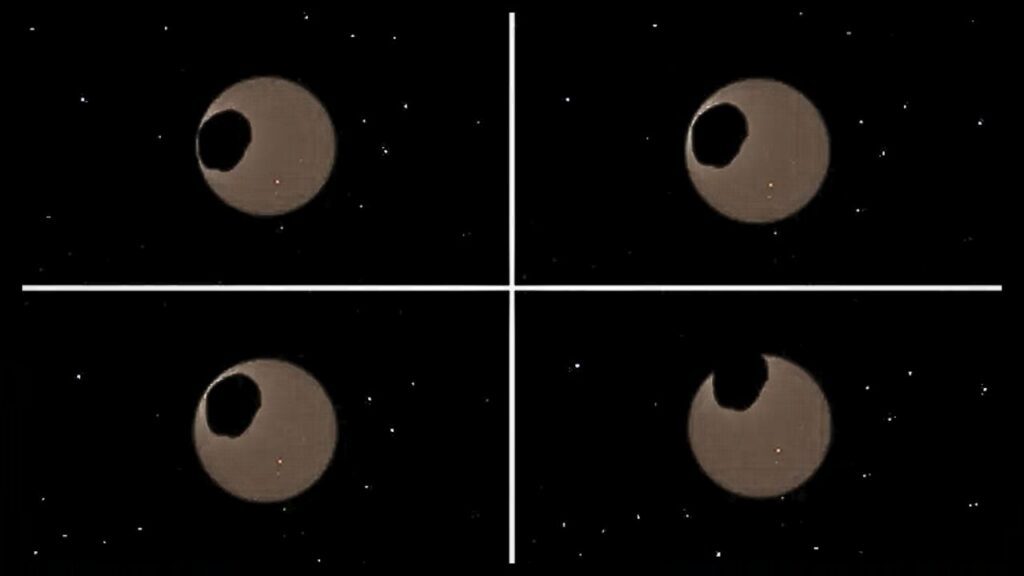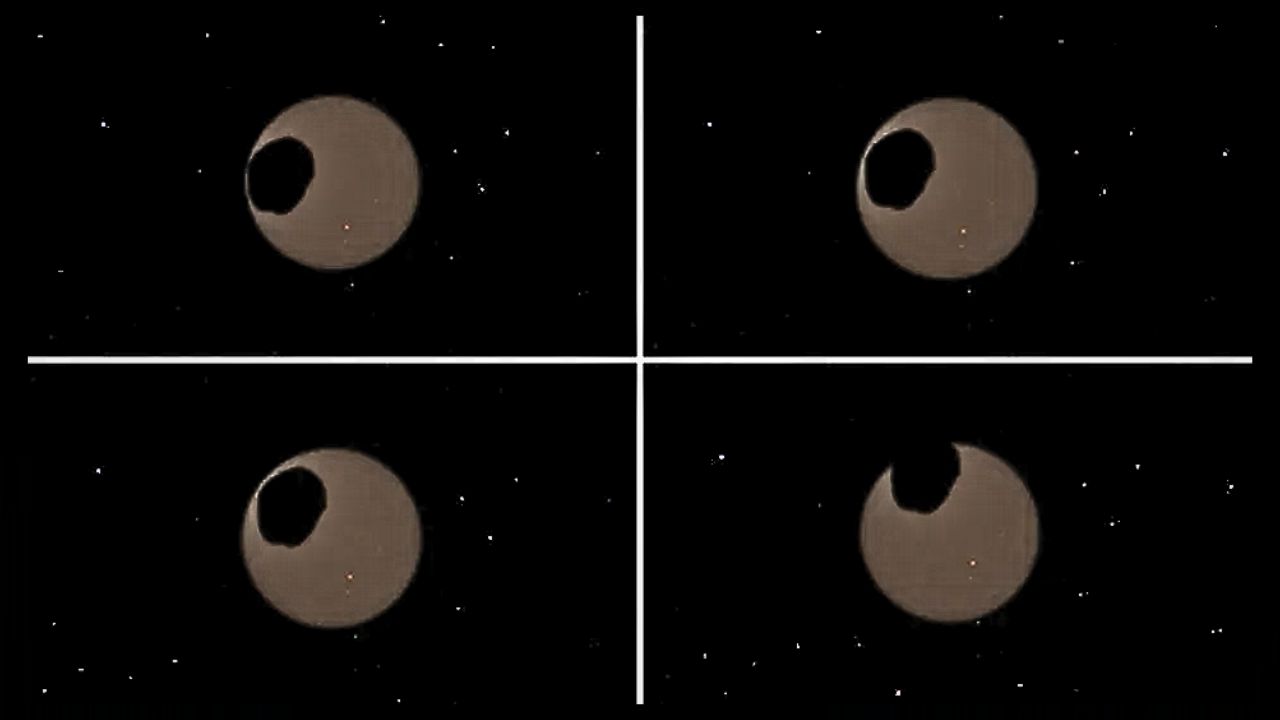The Mars rover Perseverance, operated by NASA, has sent back a captivating series of images showcasing the solar eclipse caused by its moon, Phobos. These images, originating from the Jezero Crater on Mars, were meticulously captured by the rover’s SkyCam and MastCam. Over the course of February 8, more than 65 images were taken at a rate of one image per second, to fully document this brief astronomical event.
A Glimpse of Phobos in Transit
The photographs reveal Phobos, the irregularly shaped moon resembling a potato, as it traverses the Sun. This swift celestial dance unfolded over approximately 35 seconds. This event precedes a total solar eclipse on Earth by less than two months, anticipated to captivate viewers across North America.

Anticipation for Earth’s Total Eclipse
As Earth approaches its own total solar eclipse, all of North America is poised to witness the partial phases of this phenomenon. However, the unique experience of total eclipse, characterized by a momentary daytime darkness and an unobstructed view of the Sun’s corona with the naked eye, will be confined to a path of totality stretching 115 miles wide.
Solar Eclipse on Mars
Last week, Mars witnessed a solar event characterized as either partial or annular, involving its moon Phobos. Despite its diameter of approximately 7 miles (11.5 kilometers), Phobos is too small to completely obscure the sun.
In 2004, NASA’s Spirit and Opportunity rovers captured the first-ever time-lapse images of Phobos eclipsing the sun. This observation has since been repeated by the Curiosity rover.
The Perseverance rover, having landed on Mars on February 18, 2021, is on a mission to detect evidence of past microbial life. Celebrating its 1,000th Martian day (sol) on December 12, it is now poised to investigate a region known as “Beehive Geyser.”
The Irregular Satellite: Phobos
Phobos is gradually spiraling towards Mars and is estimated to crash into the planet in approximately 50 million years. Eventually, its increasing apparent size could result in a total solar eclipse on Mars. However, due to its irregular shape, akin to a potato, Phobos cannot create a perfect eclipse.
A total solar eclipse necessitates a celestial body that is both sufficiently spherical and appears similar in size to the sun from a viewer’s perspective. Earth uniquely experiences this phenomenon, as our moon is about 400 times smaller than the sun yet appears almost the same size due to its proximity.
The Path of Totality
On April 8, the moon will position itself close enough to Earth to seem 5.6% larger than the sun, projecting a shadow traversing the planet at roughly 1,500 mph. This shadow, or path of totality, will sweep across several regions including five Mexican states (Sinaloa, Nayarit, Durango, Coahuila, and Chihuahua), 15 U.S. states (Texas, Oklahoma, Arkansas, Missouri, Illinois, Kentucky, Tennessee, Michigan, Indiana, Ohio, Pennsylvania, New York, Vermont, New Hampshire, and Maine), and seven Canadian provinces (Ontario, Quebec, New Brunswick, Prince Edward Island, Nova Scotia, and Newfoundland).
This celestial journey across North America will span 100 minutes, crossing six time zones. Observers located directly under this path will experience up to 4 minutes and 28 seconds of darkness. Major cities in this trajectory include Mazatlán, Torreón, San Antonio, Austin, Dallas, Fort Worth, Little Rock, Indianapolis, Cleveland, Buffalo, Rochester, Syracuse, and Montreal.
Other Links-
- NASA Launches PACE Mission to Study Oceans and Atmosphere
- NASA Reveals: Earth& Cosmic Twin Uncovered?
- Love in Space- US to Launch Next Moon Mission on Valentine Day
- NASA Newest Satellite to Unveil Earth Oceanic and Atmospheric Secrets










